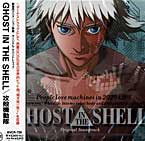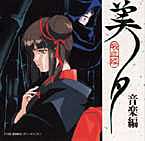by Lucian James & Olivier DeDoncker
Renowned for being anime legend Mamoru Oshii's favored composer, Kenji Kawai has scored such industry-leading favorites as Patlabor 2 and Ghost in the Shell. Of particular note, Kawai has also scored Oshii's most recent live action epic, Avalon. But self-effacing and prolific as he is, his work winds through some of anime's most popular titles such as Sorcerer Hunters, Hyper Police, Ranma �, Vampire Princess Miyu, Maison Ikkoku, Ah! My Goddess and Blue Seed among many others. Akadot, in association with Olivier DeDoncker, a freelance anime journalist in France, presents a pedestrian chat with famed anime composer Kenji Kawai on a recent trip he made to Paris to promote Avalon. What was the first anime you scored? Kenji Kawai: My first work is called Cosmo Pink Shock (1986). I actually love back ground music, and I realized that when I took on this project back in the eighties. How did you meet Mamoru Oshii? KK: I met him during production of the live action film The Red Spectacles (1987). [editorial note: One of Mamoru Oshii's early directorial works - Jigoku no banken: akai megane (The Scarlet Spectacles) - this film along with his Jigoku no banken: Kerubersu (Stray Dogs) were both set in the same universe as the Oshii script for Jin-Roh.] What was it like working with Oshii? KK: First off, he gave me an idea of the images he had in mind for the project and then I composed some demonstration music, which we then discussed at length. At that time, he never insisted on many changes. I was basically free to compose anything based on his initial idea and story plan. During the recording process, he offered some more focused suggestions, for instance he would comment on the sound of the synthesizer or the rhythm of the drums. He wanted to create very specific dramatic effects with the music.
You've been working with Oshii for years. Has your relationship evolved since you first started working together? KK: Our relationship is getting very tight, especially when we're not working. We love to play Majong. Professionally, we understand each other's tastes and the type of music each other likes. We do not have to discuss much anymore when we agree to work on a project. I can usually guess what he's going to like and not like and he can pretty much guess the kinds of things I will come up with. Do you make the music before watching the movie? KK: In the case of live action films, I always compose the music after watching a movie. However, in the case of animation, I have to compose without having seen it, without being able to appreciate the nuances of the piece. Most animation is created under a very tight schedule, forcing all the creative forces to develop simultaneously. The chorus in Ghost in the Shell sounds like Bulgarian choruses. Did they influence you? KK: Yes, they influenced me, absolutely. The idea I had was to combine the Bulgarian voices with ethnic drums because it sounded so similar to Japanese folk song. More generally, who is your biggest musical influence? KK: Burt Bacharach. Do you use computer to produce your music? KK: Not to compose, but I use a sequencer for sounds. What's your proudest work? KK: I can't say that I am the prouder of any one composition. I am proud of all of the work I have done. In France, you are very famous for the music in Patlabor 2. Could you discuss this soundtrack and let us know a little about what you wanted to express through it? KK: Fundamentally, I want to express emotion through the score. In a more abstract way, I want to create an expression for the complex structure of the story. |
||||||||
|
Ghost in the Shell © Mamoru Oshii / Manga Entertainment / Production I.G .
Vampire Princess Miyu © Sooeishinsha / Pony Canyon
|

